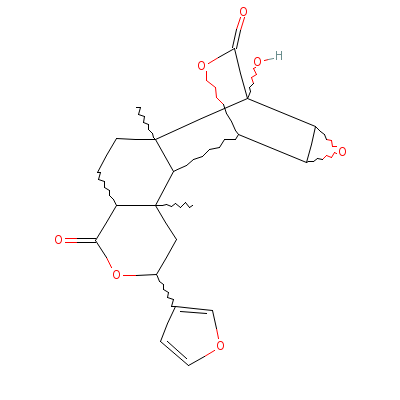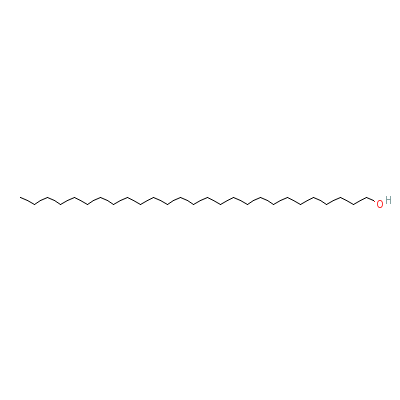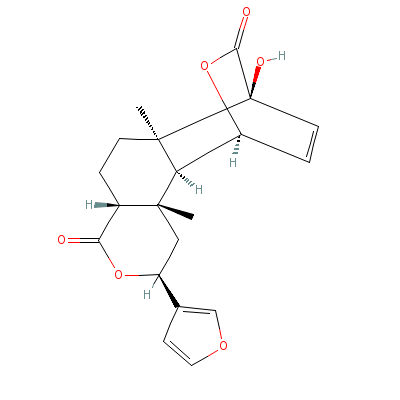Tinospora cordifolia (WILLD.) HOOK.F. & THOMS |
| |
|
|
Botanical Name |
: |
Tinospora cordifolia (WILLD.) HOOK.F. & THOMS |
English
Name |
: |
Tinospora gulancha |
Synonym(s) |
: |
Tinospora glabra (Burm f.) Merrill. Menispermum cordifolium Willd., Cocculus cordifolius DC, Menispermum glabrum Brum. f. |
Family |
: |
Menispermaceae |
| |
General Info
| Description |
 |
|
It is a large, glabrous, deciduous climbing shrub. The stems are rather succulent with long filiform fleshy aerial roots from the branches. The bark is grey-brown and warty; the leaves are membranous and cordate; the flowers, small, yellow or greenish yellow, in axillary and terminal racemes or racemose panicles; the male flowers clustered and females usually solitary; the drupes are ovoid, glossy, succulent, red and pea-sized; the seeds curved. |
| Herb Effects |
 |
|
Antiperiodic, antispasmodic, anti-inflammatory and antipyretic. |
Chemistry
| Active Ingredients |
 |
|
Tinsporine, tinosporide, tinosporaside, cordifolide, cordifol, heptacosanol, clerodane furano diterpene, diterpenoid furanolactone tinosporidine, columbin, and ß-sitosterol. |
| Chemistry
of Active Ingredients |
 |
|
|
 |
Name |
CAS# |
IUPAC Name |
Formula |
Structure |
 |
|
| Tinosporide |
17226-41-4 |
Not Available |
C20H22O7 |

|
| Heptacosanol |
2004-39-9 |
Heptacosan-1-ol |
C27H56O |

|
| Columbin |
546-97-4 |
Not Available |
C20H22O6 |

|
|
Pharmacology
| Medicinal Use |
 |
|
To treat fever (irregular and chronic), jaundice, thrist, vomiting, arthritis, skin diseases, cough, as rejuvenative for purifying breast-milk, eye diseases,secondary syphilis, rheumatism, constipation, tuberculosis, and leprosy. It is a blood purifier and may be useful in AIDS and other immune diseases also. It is also being proposed for cancer patients before and after chemotherapy. |
| Contraindication |
 |
|
Generally regarded as safe. Safety in young children, pregnant or nursing women, or those with severe liver or kidney disease is not known. |
Dealers
Products
|
|